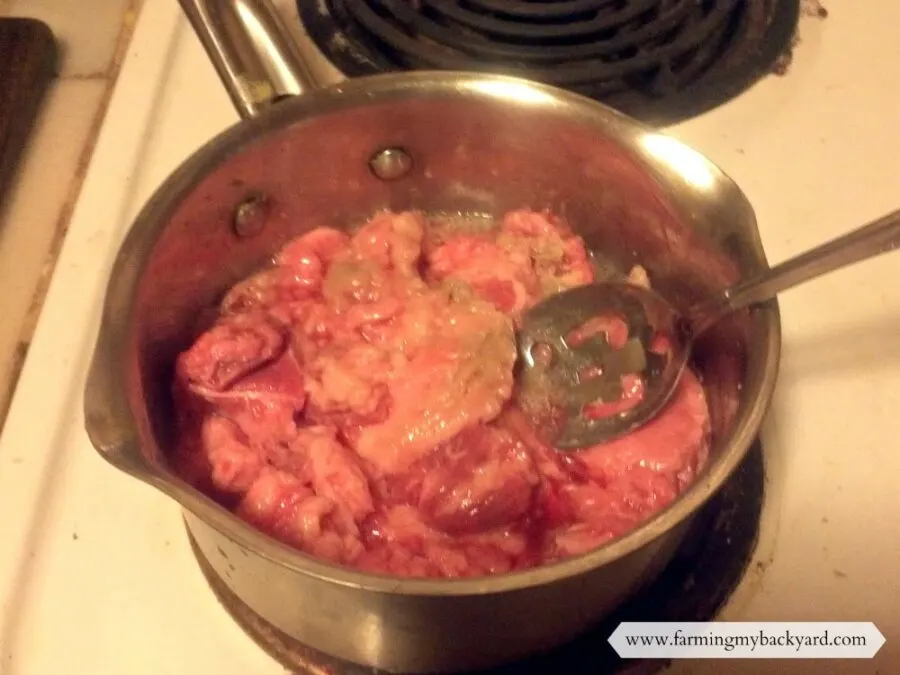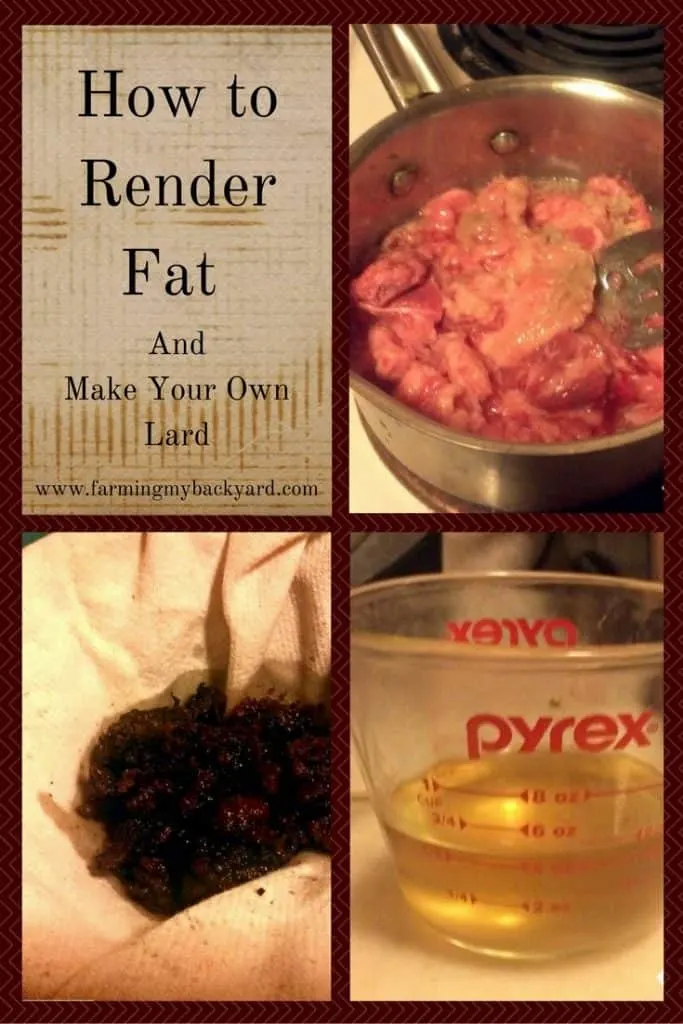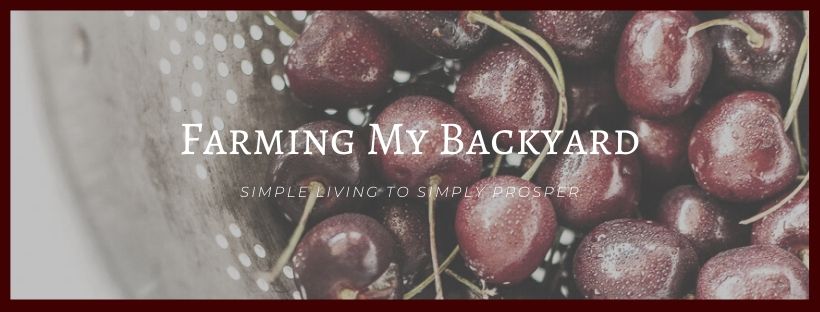The other day I was getting ready to put a fatty roast into the crock pot when I realized I should learn how to render fat. It sounded like something worth doing, but I had no clue how to start. Thankfully it turned out to be easy. We are all trying to eat more whole foods, and when meat is part of your diet, that means you will have more fatty meats. Don’t let that lovely fat go to waste!

Here are the simple steps to render fat at home:
Cut The Fat Off the Meat
Kitchen scissors probably work best. I didn’t have any on hand and just used a utility knife. Try to get as much of the fat off as you can. It doesn’t matter if it’s small or large chunks, as it will all get melted down in the next step. If you want, you can save the fat in the freezer until you have enough to render fat in a big batch.
Heat the Fat

Place your fat into a pan and add enough water to cover the fat. Heat, stirring occasionally. The fat will melt and the impurities and bits of meat will fall to the bottom of the pot. The water will burn off. It’s main purpose is to keep the fat from burning as it heats up.
Strain the Rendered Fat

Strain the cracklings and impurities through a cheesecloth. These are good to eat. Remember Laura Ingalls Wilder in Little House in the Big Woods? She loved the cracklings from their hog butchering day. I thought they were delicious. My husband didn’t like them. I supposed if you don’t like them, then cats, chickens, or dogs would be more then happy to dispose of them.
Pour into Jars

Pour the melted fat into jars for storing. It will be golden as a liquid and turn creamy white as it cools. Congratulations! You now know how to render your own fat!
Enjoy!
Rendered tallow and lard is great for high heat cooking and soap making. They make some pretty amazing french fries, and rendered fat would be an excellent choice for homemade tortillas. You can also use your lard and tallow to make homemade soap.

Want To Raise Happy Chickens?
Subscribe for our newsletter and get the free email course Intro To Backyard Chickens as well as a free printable checklist to walk you through step by step!

Kim Falk
Saturday 7th of March 2015
I cool and pour into ice cube trays. When solid, pop into a storage container and keep in freezer. A cube is perfect for browing meat, stir fry, cartelizing onions...oh the list goes on. Wonderful food choice.
Kathryn @ Farming My Backyard
Wednesday 1st of April 2015
Oh, ice cube trays are a great idea!
Bethany@OurSoCalledLife
Tuesday 29th of January 2013
What a great alternative to Crisco and other trans-fat containing concoctions. And it looks relatively simple to do.
admin
Tuesday 29th of January 2013
It has filled that trans-fat niche for us. I sometimes use coconut oil instead of crisco, but it's not local, so I love having an even better option.
Renata
Monday 28th of January 2013
Hello! Great article. I have just two questions: In what type of container do you store lard/tallow at room temperature? and How long will it keep?
Thanks in advance!
admin
Tuesday 29th of January 2013
I have mine in a reused glass jar because I try not to use plastic, but I'm sure any kind of container with a lid would work. As for how long it keeps, I'm not entirely sure. I think officially it keeps for a year in the fridge and longer in the freezer. I've heard from people they've kept it at room temperature for five years with no problems. I personally have had mine at room temperature for several months now.